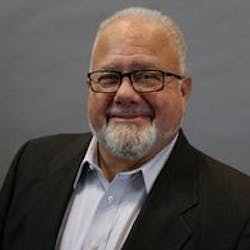The Critical Job of Keeping America’s Skies Safe
When we talk about infrastructure, there a few things more critical to the national transportation hub than our airports. The impact was devastating on the morning of September 11, 2001, when Mohamed Atta and 18 other al-Qaida-affiliated terrorists checked into their various flights emanating from Boston's Logan International Airport, Liberty International Airport in Newark, N.J., and Dulles International Airport in Washington, D.C., with the sole mission of using passenger aircraft as fuel-filled ariel missiles.
Back then, airport security protocols for screening and boarding passengers were dangerously quick and easy. The worst that could happen is that a passenger, like Atta, would be selected for closer scrutiny and subjected to a security procedure called CAPPS (Computer Assisted Passenger Prescreening System), where the only consequence was holding a ticketed passenger’s checked bags until boarding was confirmed.
Prior to Sept. 11, airport security in the United States permitted passengers to approach their gates at the last minute without a boarding pass after they had filtered through a security checkpoint that required no ID and asked no questions. There were no restrictions on liquids in your carry-on bags or box-cutters and knives in your pockets. Your shoes and overcoats were allowed to stay on your person. There were no high-resolution full-body scanners to step through or 3D-imaging X-ray devices to screen your luggage. Prior to 2001, the concept of a suicide bomber on a commercial airline was unimaginable.
According to the 9/11 Commission Report issued in July 2004, more than three years after Atta and the other Saudi-based terrorists murdered close to 3,000 people by crashing commercial airliners into New York’s World Trade Center, the Pentagon and a Pennsylvania field, “By 8:00 A.M. on the morning of Tuesday, September 11, 2001, they had defeated all the security layers that America's civil aviation security system then had in place to prevent a hijacking."
The evolution of airport security since 9/11 has been forged by many subsequent challenges that have grabbed frightening headlines -- from a shoe bomber and potential explosive liquids to the morbidly humorous underwear bomber. These threats also provided the momentum for Congress to pass the Aviation and Transportation Security Act and create the Transportation Security Administration in November 2001, which now is an agency of more than 65,000 employees.
The success the TSA has had in thwarting terroristic mayhem in American airports and on its airlines is undeniable when you consider there has not been a successful attack on a commercial airline in the U.S. in the two decades post-9/11. But most security experts agree that success can breed complacency, so aviation security professionals like Lee Kair figure their key role is to ensure that the industry stays one step ahead of the bad guys.
The reality of aviation security is that airlines and airports historically did as much as they felt necessary to maintain the illusion of safety and security with passengers while minimizing the impact on their bottom lines.
“The issue is that aviation security has always looked at risk as threat vulnerability and consequence. You have to actually have an active threat in order to have a risk that you have to mitigate. Everyone knows there are vulnerabilities, but if there's no threat, it's challenging to argue that you had to put a mitigation in place to counter that threat. If you go back way before 9/11, they initially started putting walkthrough metal detectors in place because there was a handgun threat for a hijack. They weren't necessarily as concerned about explosives, so there was not widespread use of explosive trace detection or other things,” says Kair, a former head of Security Operations at TSA and currently a Principal and Head of Security Risk & Resilience Federal Strategy Practices with the Chertoff Group, a global advisory services firm.
Kair insists that TSA could take security to the next level and make it highly effective in stopping everyone going through airport checkpoints. However, he admits it would make air travel unbearably cumbersome and require more staffing.
So Kair’s Chertoff Group team and Integrated Defense and Security Solutions (IDSS), are collaborating on taking aviation security into the clouds. Kair has just seen a U.S. patent issued on his innovative system to enhance aviation security operations and provide significantly higher officer performance and efficiency. The Chertoff Group, partnering with IDSS to develop a solution based on Open Architecture DICOS imaging standards utilizing this patented technology, which will allow access and interoperability with any checkpoint or checked baggage computed tomography (CT) system located anywhere in the world.
Innovations like this are crucial to keeping all critical infrastructure sectors safe and secure. For the air transportation industry, this could be a game changer.
About the Author
Steve Lasky
Editorial Director, Editor-in-Chief/Security Technology Executive
Steve Lasky is Editorial Director of the Endeavor Business Media Security Group, which includes SecurityInfoWatch.com, as well as Security Business, Security Technology Executive, and Locksmith Ledger magazines. He is also the host of the SecurityDNA podcast series. Reach him at [email protected].

